International Review of Research in Open and Distributed Learning
Volume 22, Number 1
February - 2021
Improving Intergroup Relations Through Online Contact
Meital Amzalag and Noa Shapira
Holon Institute of Technology, Kinneret College on the Sea of Galilee
Abstract
This study examined an online professional development program designed to support meaningful acquaintance and reduce stereotypes and prejudices among teachers from different cultures in Israeli society. The rationale of the online program was based on the premise that indirect online contact might improve intergroup relations in diverse societies. The program was designed to progress gradually, starting from basic and leading to a deeper acquaintance, using a variety of computer-mediated communication (CMC) tools. Findings indicated that upon program completion, participants were more respectful towards one another than pre-program. They held a positive view of online learning and were open to multiculturalism (more tolerant and accepting of others than previously) while still maintaining their respective cultural identities. The program participants noticed the gradual progression in task design, expressly noting that this stepwise structure supported forging a connection and then fostering familiarization. This study fills a gap in the research through demonstrating ways that online contact (indirect contact) can be used to promote acquaintance and reduce stereotypes and prejudices among teachers from different groups in Israeli society.
Keywords: indirect contact, online contact, multicultural education, teachers, computer-mediated communication
Introduction
The world is becoming increasingly diverse with respect to cultures and subcultures (Ariely, 2011). Simultaneously, categories of them and us, home and away, and east and west remain common terms used to create psychological distances between people, nations, and continents (Kinnvall & Lindén, 2010). Israel, as a multicultural society, provides a compelling example of one nation harboring significant cultural differences (Cohen, 2018). Furthermore, the Israeli educational system reflects these differences and is divided into several sectors differentiated along national-ethnic (Jews/Arabs) and religious (secular Jews/religious-nationalist Jews) lines (Katz, 2013; Sabbagh & Resh, 2014). As a result, teachers and students rarely meet people who are different from themselves and their “home” groups. This lack of meaningful interaction is characterized by phenomena such as prejudices, generalizations, and racism between the groups (Bar-On, 2008). Therefore, teachers with multicultural experiences play an essential role as agents of change in multicultural education and as role models for their students (see Shapira et al., 2020 for details).
In this paper, we discuss findings from an innovative online teacher professional development (TPD) program for teachers from several sectors in Israel (Jewish secular, Jewish orthodox, Arabs, and different subcultures in Jewish and Arab society). The online contact occurred in a Moodle platform that included guidelines to connect online using a variety of computer-mediated communication (CMC) tools. The rationale of the online TPD program was based on the premise that indirect online contact can improve intergroup relations (Walther et al., 2015).
The current study examined ways to design optimal online contact and explored how such contact may affect intergroup relations. Two questions guided our research:
- How could we design indirect online contact that leads to meaningful acquaintance among teachers from different cultures?
- Could the use of technology reduce stereotypes and prejudices among teachers, and, if so, how?
Theoretical Background
Society in the Global Era
The term globalization is frequently used to refer to the increased tendency of people in disparate parts of the globe to meet each other (Diaz & Zirkel, 2012). In addition to the differences resulting from immigration, countries’ domestic populations include ethnic, linguistic, and religious diversity (Patsiurko et al., 2012), as well as Indigenous or native minorities (Clarke, 2001; Van Cott, 2005). The diversity of societies is an essential factor in shaping national identity and intergroup relations (Rodriguez, 2003). Unless a common goal binds the different groups together, tribal hostilities, as well as racial and ethnic conflicts will and do drive them apart (Kinnvall & Lindén, 2010). Additional implications on intergroup relations include people’s tendencies to connect and conduct interpersonal ties with those most similar to them.
Homophily—Meeting Only With People Like Me
The similarity between the members of social groups, or between individuals sharing a social link has long been observed and studied (Aiello et al., 2012). The homophily principle or the idea that similarity breeds connection structures network ties of every type (Bisgin et al., 2010; McPherson et al., 2001). The factors that govern the construction of ties in the real world also govern the construction of friendship ties in social media. In a world of networked media, it is difficult to get access views from people who hold different perspectives. Information in social media flows in ways that create and reinforce social divides (Aiello et al., 2012). Homophily’s effects are observed in many social networks concerning age, ethnicity, religion, and the like (McPherson et al., 2001). Studies conducted among U.S. college students have found segregation based on ethnicity and race is as high on social media as it is on campuses (see Hofstra, 2017; McPherson et al., 2001).
In a reality of alienation and separation between groups and people who connect only with people like them, both in everyday life and online, intervention is needed to improve intergroup relations. The main approach to relationship improvement is based on the contact theory.
Intergroup Contact
Intergroup contact, under appropriate conditions, may increase positive intergroup emotions and enhance empathy, as well as reduce negative emotions (Pettigrew & Tropp, 2006, 2008; Tam et al., 2008). Contact improves intergroup relations by enhancing knowledge about the out-group and reducing perceived threat and apprehension regarding meeting members of the other group. Contact enables one to assume the perspective of out-group members and may contribute to improved intergroup attitudes (Pettigrew & Tropp, 2008). Four conditions are specified for optimal intergroup contact: equal group status within the situation, common goals, intergroup cooperation, and support from authorities (Allport, 1954). These optimal conditions are difficult to achieve in a reality of division, alienation, and homophily. However, indirect contact seems to provide a viable option for improving intergroup relations, fostering intergroup empathy and reducing negative emotions (Batson & Ahmad, 2009; Shapira et al., 2016; Stathi & Crisp, 2008; Walther et al., 2015). The term indirect contact includes various forms of contact that do not include face-to-face encounters between the in-group and the out-group, including online contact, which is intergroup interactions via new technologies (Kim & Wojcieszak, 2018).
Improving Intergroup Relations Through Online Intergroup Contact
Research indicates that given the proper conditions, indirect contact can elicit positive intergroup attitudes (Amzalag et al., 2015; Paluck, 2009; Stathi & Crisp, 2008; Steinberg & Bar-On, 2002). With the growth and popularity of CMC, scholars claim that intergroup contact theory can be fruitfully applied to online contexts (Amichai-Hamburger & McKenna, 2006; Hasler & Amichai-Hamburger, 2013). Empirical research of these propositions indeed finds positive effects of indirect online contact on the reduction of prejudice and intergroup bias (Lev-On & Lissitsa, 2015), and potential for reducing out-group prejudice (Amichai-Hamburger & McKenna, 2006; Hasler & Amichai-Hamburger, 2013). For example, online contacts between Jews and Arabs in Israel minimize the social distance that Israeli Jews maintain toward Arabs (Lev-On & Lissitsa, 2015). Virtual groups who communicated during a yearlong online course, which included students from the three major Israeli education sectors—religious Jews, secular Jews, and Arabs—showed reduced prejudice toward the respective out-groups (Walther et al., 2015).
The current study focused on online intergroup contact between teachers from several sectors in Israel. The teachers met online and gained significant acquaintance with one another in a variety of ways that will be described in the methodology section.
Methodology
This study used a mixed methods approach, combining quantitative and qualitative research tools for data analysis (Anderson & Shattuck, 2012). Such a combination allows for a solid foundation and in-depth comprehension of results as well as facilitates the discovery of novel perspectives (Creswell, 2013; Dunning et al., 2008; Patton, 2002).
In the present study, various means were used to collect data, which enabled triangulation of the findings to strengthen the validity of the results (Flick, 2004). The research was conducted as part of the online teacher professional development (TPD) program extending over a six-month period (October-March) and published at the Center for Educational Technology (CET). The TPD program was intended to encourage significant online acquaintance and included 30 hours of interactions among participating teachers. The entire TPD program was conducted online using the Moodle platform and facilitated by this paper’s authors. Considering the tendency towards ethnic homophily on online social networks (Hofstra et al., 2017; McPherson et al., 2001), the collaborative activities aimed to support teachers to get to know one another through online contact and develop meaningful relationships, thereby reducing stereotypes and prejudice.
The TPD program was designed to progress gradually, starting from basic and leading to in-depth acquaintance.
There were seven assignments, as delineated in Table 1.
Table 1
The TPD Program Design – The Seven Assignments, Their Rationale Characteristics and Duration, the Interventions, and the Data Collection Tools
| Activity name | Activity rationale | Instructional design | Data collection tool | Activity duration |
| Activity characteristic | Instructor intervention during the activity |
| Israeli society meets on the Net (pre) | Participants’ attitudes towards multiculturalism and online acquaintance before the TPD program | Answer an online questionnaire | | Survey | 10 min |
| First acquaintance | First acquaintance through pictures | - Upload a representative picture, without identifying details
- Respond to 3 colleagues’ pictures by guessing and writing who was behind the image and their rationale for the “guess”
| - All pictures and responses are anonymous
- Ask participants to respond to anyone who has not yet received a response
| Padlet | 4 hr |
| True or false | To encourage interactions between participants and arouse curiosity | - Write a paragraph about myself
- Write 5 facts: 3 false and 2 true
- Respond to 3 participants by writing in the online forum what is true, what is false, and why
| Send all participants an e-mail that asks them to respond to anyone who has not yet received a response
Use encouraging phrases such as: “What an interesting comment!” | Online forum | 4 hr |
| A sense of place | To encourage interactions and deeper acquaintance between participants | - Upload a picture that presents a sense of place and indicate what the image means to me
- Respond to 2 participants about what they learned, felt, and thought about the picture
| Send all participants an e-mail that:- Asks them to respond to anyone who has not yet received a response
- Uses encouraging phrases such as: “There are no less than 93 personal, exciting, and interesting photos and stories, but there are some that were missed” (didn’t get a response)
| Google slide | 4 hr |
| Conversation between 2 participants | To pair participants according to different national, religious, and gender identities, where they lived, etc., to create a more profound and personal acquaintance | - Talk with another participant
- Record or transcribe the conversation
- Write a description of the partner
- Respond to 3 other participants about their discussion
| Send all participants an e-mail that encourages participation. For example: “The Google slide is full of interesting acquaintances and interviews between the pairs. At the same time, some have not received a reply. Please respond to them.” | Google slide | 4 hr |
| Israeli society meets on the Net (post) | Attitudes towards multiculturalism and online acquaintance after the TPD program | Answer an online questionnaire | | Survey | 10 min |
| Reflection | A retrospective of the process that each participant underwent during the TPD program | Answer guiding questions such as:- What do I think about meeting online with various groups in Israeli society?
- What are your main insights from the course?
- What did I feel and think before the course and what do I feel and think now?
| | Online forum | 4 hr |
Participants
Eighty-five teachers participated in the TPD program, 16 men and 69 women. Their average age was 41.6 (SD = 8.9). Fifty-nine participants were Jewish, and 26 Arabs. Forty-five percent hold bachelor’s degrees, and 49% hold master’s degrees. Forty participants defined themselves as secular and 15 as religious and all the rest defined themselves as traditional. Forty-two participants teach in elementary school and the remainder in middle and high schools.
Data Collection and Data Analysis Methods
Quantitative and qualitative data were collected from a questionnaire and from the products of the TPD program tasks, which included pictures and text.
We analyzed the pictures and texts using an interpretive approach, identifying key themes (Braun & Clark, 2006) and relying on theoretical concepts of intergroup relations (Batson & Ahmad, 2009; Stathi & Crisp, 2008). The data were analyzed by the two researchers, separately, to enhance the reliability of the qualitative data.
The First Questionnaire (Pre-)
A three-part questionnaire based on the research of Laron and Lev Ari (2013) and Holladay et al., (2003) included questions relating to gender, education, national affiliation, religion, and attitudes toward multiculturalism and online acquaintance.
Participants were asked to indicate their attitudes by rating items using a Likert scale (1 = do not agree at all to 5 = agree to a large extent). The questionnaire was written on Google Forms and distributed online through the Moodle platform. The participants completed this questionnaire at the beginning of the TPD program.
The Second Questionnaire (Post-)
After the TPD, participants completed a five-part questionnaire including three parts identical to the pre-questionnaire and two new parts about the TPD program and attitudes towards online learning. The items were derived from previous questionnaires (Maruyama et al., 2000; Pohan & Aguilar, 2001; Rew et al., 2003; Holladay et al., 2003; Laron & Lev Ari, 2013) with specific adaptations to the topic of the current study.
The quantitative data were analyzed using SPSS software, including frequency tests and pair sample t-tests.
Data Collection and Analysis
Although there were seven stages, due to space constraints, we describe in-depth three main stages in Table 2.
Table 2
Data Collection Tools, Quantitative or Qualitative Data, Data Analysis, and Themes
| Data collection tool | Quantitative/Qualitative data | Analysis | Theme |
| Questionnaires (pre and post) | Quantitative
Pre and post questionnaire:- background (11 questions)
- attitudes towards multiculturalism (12 items)
- online acquaintance (8 items)
Only in the post questionnaire:- implementing a multiculturalism approach during the program (29 items)
- online learning during the program (7 items)
- two open-ended questions
| Frequency tests and pair sample t-test using SPSS | |
| A sense of place | Qualitative and quantitative | - Dividing visual and textual content into themes (qualitative)
- Counting the number of the content in each theme (quantitative)
| Family, home, sea view, landscape view, pets, hobbies |
| Reflections | Qualitative | Dividing textual content into themes | All aspects of Israeli society, multicultural education, integrating teaching technology tools as a means of knowing people, TPD program design, participants’ feelings and insights, advantages and disadvantages of the TPD program, finding a common denominator |
Note. The researchers separately analyzed the content. Initially, they reached a 71% match, and, after reviewing category accuracy, they reached an 84% match.
Findings
The findings are presented via research questions.
Research Question 1
The first research question asked in what ways indirect online contact could be designed to lead to meaningful acquaintance between teachers from different cultures. First presented are findings from the questionnaire, followed by findings arising from the various tasks undertaken by the teachers in the TPD program.
Research Variables and Descriptive Statistics
Table 3 presents the research variables’ means and respective Cronbach’s alpha internal consistency.
Table 3
Descriptive Statistics of Research Variables’ Means and Internal Consistency
| Variable | Item for example | M | SD | α |
| Respect towards one another | “The TPD program was sensitive to the participants’ cultures.” | 4.64 | 0.46 | 0.85 |
| Online learning | “The TPD program (structure, activity) contributed to the learning.” | 4.41 | 0.48 | 0.85 |
| Openness towards multiculturalism | “Multicultural education is more important than reading, math and computer literacy.” | 3.90 | 0.72 | 0.88 |
| Cultural identity | “My beliefs and attitudes are influenced by my culture.” | 3.72 | 1.01 | 0.92 |
| Behavioral changes | “The TPD program affected my opinions about other cultures.” | 3.66 | 0.98 | 0.86 |
| Opportunity to get acquainted with another culture (on the Net) | “The internet allowed me to meet people I could not have met in any other way.” | 3.16 | 0.96 | 0.73 |
As Table 3 shows, the research variables exhibit a medium to very high internal consistency, except for the last variable, which is approaching the absolute minimum acceptable level of 0.7. One could further note from these results that, in the TPD program, participants were respectful towards one another, held very positive views of online learning, and were open to multiculturalism while still maintaining their own cultural identity. The TPD program also promoted behavioral changes.
The tasks in the online TPD program were designed by the researchers and administered to participants while emphasizing gradual progression in the evolution of the forming relationships, starting with the initial introduction and concluding with in-depth familiarity. Two main tasks are presented below.
Acquaintance Through a Joint Presentation—A Sense of Place
This task was designed to take the familiarization process one step forward (subsequent to the two first tasks—first acquaintance and true or false). Each participant shared with the group the place that is most important in their life, inseparable from their identity, rooted in their own life story, and deeply connected with the experiences that shaped their lives.
Seventy-one participants responded, specifying their names. Although the task called for 3 posts, 39% of participants uploaded more than two posts. For example, T uploaded 8 posts, S, H, and A uploaded 5, and seven teachers each uploaded 4 posts.
We then examined the responses commenting on the various images and texts uploaded by participants. Several photos and descriptions are shown in Table 4 alongside the comments they generated from other participants.
Table 4
Number and Examples of Comments on the Images and Texts Uploaded by TPD Program Participants
| Image | Image information | Number of comments | Comment examples |
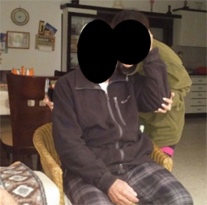 | I chose a photo taken at my grandmother and late grandfather’s home. Since childhood, I spent a lot of time there. ... taught me... about my Yemenite heritage.... | 6 | Example 1:
R, your photo and stories were touching... I had also spent much time at my grandfather’s, and I have many cherished memories from their home...
Example 2:
I very much relate to it since I was also extremely close with my grandparents, and I have very fond memories from their home... |
 | For me, home is a family time-out. During summers, we love to spend time on the beach and enjoy our vacations and freedom. | 6 | Example 1:
It’s clear to see that you are very in tune with nature and possess a sense of peace and tranquility.
Example 2:As a surfer, I relate very much. There is nothing like the beach to make one experience fun, feeling relaxed and recharged for the upcoming new week. |
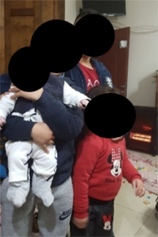 | I chose [a photo] of my home, specifically the room where we all gather. My life is my children... | 6 | I agree with every single word, a home is not just a physical space, but first and foremost, an emotional space. |
 | I feel free in Amsterdam everywhere in the city... I feel alive... Nobody is looking at me differently for having a Christian, Polish partner. | 5 | Example 1:
H, I can understand why you choose to run so far just to feel normal. I wish one day we could live together and wholeheartedly accept the choices each person makes for themselves.
Example 2:
I totally understand why you find this feeling for Amsterdam because here, in Israel, people do not readily accept things that go against religion. |
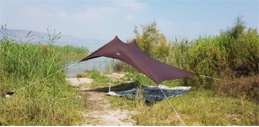 | A picture of the Kinneret (the Sea of Galilee)... I live in the Jordan Valley... I love the laid back, tranquil atmosphere. I feel like I’m on vacation all year round. | 5 | Example 1:
...I have always kept a place in my heart for the great outdoors, and it’s very touching to see it here... I am a city girl to the bone, but every time I see nature, my heart expands...
Example 2:
I love your picture because it reminds me of the times, I would go on trips in the outdoors as a child. |
Table 4 suggests that where teachers shared photos with a special or personal message, they garnered more response. Also, content analysis of those responses indicates that 37% of teachers chose to refer to the teacher they responded to by their first name. This suggests a higher level of familiarity in interpersonal dialogue among teachers.
Conversation Between Two Participants
The following is an excerpt from a conversation between an Arab teacher and a Jewish teacher:
Z (Arab male teacher in Elementary school): Our school participates in meetings... with a Jewish school...
D (Jewish female teacher in Junior High school):... If we do it through education, we will only gain a healthier, better society and fewer problems [Arabs and Jews]... If you come to the central area with your family, you are welcome.
Z: Thank you. You are also invited...
This passage is one of many, indicating the desire to live side by side, in neighborliness.
Last Task—Reflections
This task enabled us to examine whether the program participants were aware of the gradual progression of the tasks, what insights they may have acquired, and whether the design of the online environment had indeed contributed to forging connections between teachers from different backgrounds and sectors of Israeli society.
The following three quotations suggest that participants indeed noticed the gradual progression in task design, some expressly noting that this stepwise structure supported forging a connection and developing familiarization.
I noticed that the program was gradually structured... Task by task, I progressively felt more comfortable writing about myself, exposing my feelings, especially in a Sense of Place”... (L, a female Jewish teacher in Elementary school).
An important tool I acquired in the training program was the activities’ structure and methodology, i.e., creating the entire familiarization process, from macro to micro... (A, a male Jewish teacher in High school).
The program experience was like a funnel—from a superficial acquaintance of many people to a deeper familiarization with fewer participants, to very profoundly getting to know one particular participant (R, a male Jewish teacher in High school).
Such quotations suggest that the program’s stepwise progression contributed to participants’ growing motivation to get to know one another. Moreover, establishing the need for active participation, as we did when we asked participants to respond to and comment on the various contents uploaded by other participants, further contributed to forging connections.
I found the possibility of reading my peers’ comments very positive ... I liked the fact that I could respond to their posts and see the responses of others to my own posts and those of other group members... (N, a female Jewish teacher in Elementary school).
The tasks were challenging and we always had to comment or respond to our peers (more than one), which enabled more exposure and the opportunity to learn about ourselves and others (H, a female Jewish teacher in High school).
Alongside the many positive responses in the reflection portion, there were also a few negative responses.
... I did not feel like the process was substantially profound... One idea would be to create tasks where we will be exposed to new technological tools that could render the physical distance entirely meaningless (D, a female Jewish teacher in Elementary school).
It was uncomfortable for me when I was tasked with contacting one of my peers online... The interaction was superficial... I didn’t really learn anything from this virtual connection (N, a female Jewish teacher in Elementary school).
Despite this, the majority of participants noted high comfort levels with regard to the online program.
A substantial advantage was that I could carry out the course’s tasks at my own leisure, thus requiring no preliminary preparation. I also had the opportunity to meet new people, in a manner that’s new and unusual for me (R2, a female Jewish teacher in Elementary school).
Research Question 2
The second research question concerned whether and how technology reduces stereotypes and prejudices among teachers. We first present findings from the questionnaire, followed by findings from the various tasks undertaken by teachers in this program.
Initially, we looked at whether there were any changes in the research variables measured before and after the TPD program. To this end, we conducted dependent t-tests. Findings are presented in Table 5.
Table 5
Attitude Differences Before and After the TPD Program
| Attitude | Before TPD program
(n = 85) | After TPD program
(n = 85) | t |
| M | SD | M | SD |
| Openness towards multiculturalism | 4.09 | 0.60 | 4.37 | 0.58 | 4.41** |
| Cultural identity | 3.49 | 0.87 | 3.72 | 1.01 | 2.28** |
| Acquaintance via online media | 3.94 | 0.69 | 4.33 | 0.66 | 4.99** |
| Behavioral changes | 2.46 | 0.91 | 2.75 | 0.87 | 3.01** |
Note. p < 0.01**
This table demonstrates that despite initial high values in many variables, we still see a positive, significant change in all variables following participation in the training course: openness towards multiculturalism increased, but so did the participants’ respective personal cultural identities. Their stance towards acquaintance via online media was improved, and positive changes were also noted in their behaviors (increased tolerance and acceptance of the “other”).
The next step in our analysis aimed at understanding the reasons for the positive changes, examining whether such changes could be explained by any of the various tasks presented to the participants.
In the task “A Sense of Place”, participants were asked to show one another photos that would enable peers to look for and identify various commonalities between people. These photos were categorized as shown in Table 6.
Table 6
Categories and Photos From the A Sense of a Place Task
| Category | Photo |
| Trips |  |
| Family | 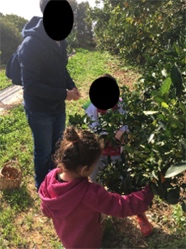 |
| Views |  |
| Classes | 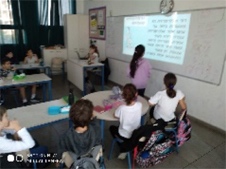 |
None of the participants chose to present photos with potential to cause discomfort. On the contrary, participants were looking for commonalities. Several participants repeated in their comments that there are points of common interest regardless of ethnicity (Arab/Jew) or religion (religious/secular). Therefore, it can be concluded that the participants related to each other as equals, without distinguishing among religion, race, or gender.
I discovered that the majority of us share common goals... We are all educators and the exemplification of moral standards of parity and equality is a goal that [is shared] by us all (G, a female Jewish teacher in Elementary school).
I learned how small the world really is and how many points of similarity there are between myself and my peers and professional colleagues (Y, a female Jewish teacher in Elementary school).
These quotations demonstrate that the program participants approached prejudice and preconceptions indirectly, looking for commonalities, both on the professional as well as the personal level.
However, some of the participants’ comments referred directly to stereotypes and prejudice:
The Internet is a space enabling equality where we can all truly participate and get to know one another, therefore, it is allowing us to build bridges and forego prejudice and stereotypes, truly getting to know one another (A2, a female Jewish teacher in Elementary school).
Through online activity, interpersonal relationships can develop and we can get to know people who are different. Also, we can share our thoughts and feelings with others, inclusively accepting the other (S, a female Arab teacher in Elementary school).
Getting to know different types of people was important for many participants, as illustrated in the following quotations:
Online encounters are a wonderful trigger for new acquaintances. Most of us have no real exposure to different [population] groups in our daily lives... (A, a male Jewish teacher in High school).
The Internet is the only tool that could truly bring people of different and varied opinions together, and this is something we need to take with us. We all know that Israeli society is considered a broad-spectrum, multicultural society, which is why it’s so important to have a tool like the Internet... (H, a female Arab teacher in Elementary school).
These quotations testify to the extent to which people from various backgrounds are eager to experience intercultural intersection. Technology provides people an opportunity to get to know others from diverse populations and backgrounds. Even just the exposure may reduce prejudice and conceptions concerning the different groups comprising Israeli society. This statement is further substantiated by participant D (A female Jewish teacher in Elementary school).
I am very sorry for not having had the opportunity to be paired with a woman from a minority group... I was ... looking forward to the opportunity to make real contact and get to know [someone different].
Discussion
This research presents a teachers’ online TPD program carried out in Israel, a country which demonstrates significant cultural differences, stereotypes, and prejudices between groups (Walther et al., 2015). Research participants were teachers from diverse groups in Israeli society, participating in an online TPD program entitled The Israeli Society is Meeting Online. This TPD program encouraged online contact between participating teachers (Batson & Ahmad, 2009; Kim & Wojcieszak, 2018; Stathi & Crisp, 2008) in order to reduce stereotypes and prejudices. Although the parameters of direct and some forms of indirect contact are well established empirically, indirect online contact and its potential to improve intergroup relations have not yet been extensively investigated. Therefore, this study fills a gap in the research and demonstrates how online contact can be used to establish acquaintance and reduce stereotypes and prejudices among teachers from different groups in Israeli society.
The TPD program design was based on four conditions for optimal contact between groups (Allport, 1954):
- Equal group status in the situation: The online environment created an equal starting point among participants. All participants were teachers, meaning they shared an equal professional identity.
- Common goals: All teachers were interested in professional development in the field of intergroup relations.
- Collaboration between groups: All tasks were based on collaboration between the participants.
- Institutional support: The TPD program was supported by the Ministry of Education.
This research applied Allport’s four conditions (1954) to an online environment and used computer-mediated communication (CMC) tools.
The research literature primarily addresses designing online environments for different goals (e.g., Brindley et al., 2009; Conceição, 2006). This research goes beyond and demonstrates how course design can develop and improve intergroup relations through online contact between groups. The course was designed to be a gradual series of meetings between teachers from different cultures in an online environment, in which participants would be enabled to meet, get to know each other, express more positive attitudes to one another, discover similarities, and show interest in face-to-face encounters.
In fact, the online contact in this program enabled de-categorization, in which participants referred to each other as individuals and not as representatives of their respective groups (Dovidio et al., 1997; Schellhaas & Dovidio, 2016). The de-categorization was established through the TPD program design that encouraged participants to communicate around their shared interests and backgrounds. The participants chose to introduce and discuss their similarities and connecting characteristics rather than discuss controversial factors that lead to separation.
During the online TPD program, the participants were encouraged to respond to each other regarding the materials they uploaded in order to create relations between the online discussions and social connections, as recommended by Hurt et al. (2012). Indeed, the tasks were designed to stimulate curiosity and discussion (such as in the task “A sense of place”) which spurred a desire to deepen relationships.
The TPD program design enabled positive processes. Participants described their attitudes towards openness to multiculturalism and their cultural identities before and after the program. This study’s findings highlight the process that enables participants to improve their acceptance of multiculturalism through intergroup online contact and to see each person as an individual, regardless of religion, race, or gender.
Interestingly, while the TPD program participants’ openness to multiculturalism increased, their identification with their own cultural identities also increased. In other words, there was no contradiction between identity preservation and openness to multiculturalism. Some research has shown that personal identity is strengthened through encounters with others (Dovidio & Gaertner, 1999). This study expands that theory, demonstrating that openness to multiculturalism and personal identity can both be strengthened by meeting with others, even when using CMC for intergroup contact.
The positive online contact that participants underwent is unique, innovative, and not routine, because, in the context of the Israeli reality, interactions between different cultures are rare and the norm is rather intergroup separation, and high levels of tension, prejudice, stereotypes, and even hostility (Katz, 2013; Sabbagh & Resh, 2014). However, our findings indicate that acquaintance between teachers from different groups through online contact is possible, positive, and enables interpersonal changes, such as tolerance and containment that are so crucial to Israeli society.
Although teachers did not specifically discuss reducing stereotypes and prejudices toward the out-group, findings here are similar to those of Payne et al. (2010) who indicated that openness, a desire to know each other, and search for similarities are evidence of a reduction in stereotyping and prejudice and can be achieved through online contact. The teachers in this study expressed their desire to meet teachers from other groups in Israeli society and expressed positive attitudes towards them.
In summary, the current research makes both theoretical and practical contributions to the existing knowledge base. The theoretical contribution is connected to the use of CMC tools for intergroup contact between people in general and educators in particular to enhance acquaintance and reduce stereotypes and prejudice. Although the network has phenomena of homophily, racism, hatred, and stereotypes, it is possible to take advantage of remote familiarity with technological tools and to gain positive acquaintance through appropriate design. The practical contribution of this research refers to the ways to design TPD programs aimed at improving intergroup relations through online contact. In a COVID-19 world, where, on the one hand, there exists social distance and, on the other hand, there also exist phenomena such as homophily and prejudice in online environments, this study has implications for society in general and the education system in particular. It is indeed possible to create social closeness from a distance between divided groups that do not usually meet or know much about each other. Teachers and professionals who undergo this type of program can serve as agents of change in society, at their workplaces, and in schools.
Limitations and Suggestions for Future Research
All teachers voluntarily chose to participate in the program and thus it may be inferred that they were sympathetic toward multiculturalism. Future studies should include “hesitant populations” or teachers who are more skeptical about the potential or even desirability of improving relations among rival groups. Also, the TPD program did not encourage teachers to deal with complex or controversial issues in Israeli society. The tasks encouraged participants to discuss mainly their commonalities. Therefore, it is recommended that a similar TPD program be designed and offered, with the added element of addressing controversial issues.
Lastly, the research was conducted in Israel and reflects the specific Israeli reality. Therefore, it is recommended that this research be undertaken in other diverse countries. Further research in this area is significantly needed, particularly in a COVID-19 world.
References
Aiello, L. M., Barrat, A., Schifanella, R., Cattuto, C., Markines, B., & Menczer, F. (2012). Friendship prediction and homophily in social media. ACM Transactions on the Web, 6(2). http://doi.org/10.1145/2180861.2180866
Allport, G.W. (1954). The nature of prejudice. Addison-Wesley.
Amichai-Hamburger, Y. & McKenna, K. Y. A. (2006). The contact hypothesis reconsidered: Interacting via the Internet. Journal of Computer-Mediated Communication, 11(3), 825-843. http://doi.org/10.1111/j.1083-6101.2006.00037.x
Amzalag, M., Elias, N., & Kali, Y. (2015). Adoption of online network tools by minority students: The case of students of Ethiopian origin in Israel. Interdisciplinary Journal of e-Skills and Life Long Learning, 11, 291-312. https://doi.org/10.28945/2321
Anderson, T., & Shattuck, J. (2012). Design-based research: A decade of progress in education research? Educational researcher, 41(1), 16-25. https://doi.org/10.3102/0013189X11428813
Ariely, G. (2011). Globalization, immigration and national identity: How the level of globalization affects the relations between nationalism, constructive patriotism and attitudes toward immigrants? Group Processes & Intergroup Relations, 15(4), 539-557. http://doi.org/10.1177/1368430211430518
Bar-On, D. (2008). The others within us: Constructing Jewish-Israeli identity. Cambridge University Press.
Batson, C. D., & Ahmad, N. Y. (2009). Using empathy to improve intergroup attitudes and relations. Social Issues and Policy Review, 3(1), 141-177.
Bisgin, H., Agarwal, N., & Xu, X. (2010, August). Investigating homophily in online social networks. In 2010 IEEE/WIC/ACM International Conference on Web Intelligence and Intelligent Agent Technology (Vol. 1, pp. 533-536). IEEE. http://doi.org/10.1109/WI-IAT.2010.61
Braun, V., & Clarke, V. (2006). Using thematic analysis in psychology. Qualitative Research in Psychology, 3(2), 77-101.
Brindley, J. E., Blaschke, L. M., & Walti, C. (2009). Creating effective collaborative learning groups in an online environment. International Review of Research in Open and Distributed Learning, 10(3). https://doi.org/10.19173/irrodl.v10i3.675
Clarke, G. (2001). From ethnocide to ethnodevelopment? Ethnic minorities and Indigenous Peoples in Southeast Asia. Third World Quarterly, 22(3), 413-436. http://doi.org/10.1080/0143659012006168
Cohen, A. (2018). Cultures within cultures in Israel: Jewish and Arab cultures and the work–family interface. In K.M. Shockley, W. Shen, & R.C. Johnson (Eds.), The Cambridge handbook of the global work–family interface (pp. 424-435). Cambridge University Press. https://doi.org/10.1017/9781108235556.023
Conceição, S. C. (2006). Faculty lived experiences in the online environment. Adult Education Quarterly, 57(1), 26-45. http://doi.org/10.1177/1059601106292247
Creswell, J. W. (2013). Research design: Qualitative, quantitative, and mixed methods approaches. Sage.
Diaz, J., & Zirkel, S. (2012). Globalization, psychology, and social issues research: An introduction and conceptual framework. Journal of Social Issues, 68(3), 439-453. http://doi.org/10.1111/j.1540-4560.2012.01757.x
Dovidio, J. F., & Gaertner, S. L. (1999). Reducing prejudice: Combating intergroup biases. Current Directions in Psychological Science, 8(4), 101-105. https://www2.psych.ubc.ca/~schaller/308Readings/Dovidio1999.pdf
Dovidio, J. F., Gaertner, S. L., Validzic, A., Matoka, K., Johnson, B., & Frazier, S. (1997). Extending the benefits of recategorization: Evaluations, self-disclosure, and helping. Journal of Experimental Social Psychology, 33(4), 401-420. https://doi.org/10.1006/jesp.1997.1327
Dunning, H., Williams, A., Abonyi, S., & Crooks, V. (2008). A mixed method approach to quality of life research: A case study approach. Social Indicators Research, 85(1), 145-158. https://doi.org/10.1007/s11205-007-9131-5
Flick, U. (2004). Triangulation in qualitative research. In U. Flick, E. von Kardoff, & I. Steinke (Eds.), A companion to qualitative research, 3 (pp. 178-183). Sage.
Hasler, B. S. & Amichai-Hamburger, Y. (2013). Online intergroup contact. In Y. Amichai- Hamburger (Ed.), The social net: Understanding our online behavior (pp. 220-252). Oxford University Press.
Hofstra, B., Corten, R., van Tubergen, F., & Ellison, N. B. (2017). Sources of segregation in social networks: A novel approach using Facebook. American Sociological Review, 82(3), 625-656. https://doi.org/10.1177/0003122417705656
Holladay, C. L., Knight, J. L., Paige, D. L., & Quiñones, M. A. (2003). The influence of framing on attitudes toward diversity training. Human Resource Development Quarterly, 14(3), 245-263. https://doi.org/10.1002/hrdq.1065
Hurt, N. E., Moss, G. S., Bradley, C. L., Larson, L. R., Lovelace, M., Prevost, L. B.,... & Camus, M. S. (2012). The" Facebook" Effect: College Students' Perceptions of Online Discussions in the Age of Social Networking. International Journal for the Scholarship of Teaching and Learning, 6(2), n2. https://doi.org/10.20429/ijsotl.2012.060210
Katz, Y. (2013). The state approach to Jewish and non-Jewish education in Israel. In K. Watson & W.I. Ozanne (Eds.), Education and religion: Global pressures, local responses (pp. 325-338). Routledge. https://doi.org/10.1080/03050068.2010.503741
Kim, N., & Wojcieszak, M. (2018). Intergroup contact through online comments: Effects of direct and extended contact on outgroup attitudes. Computers in Human Behavior, 81, 63-72. https://doi.org/10.1016/j.chb.2017.11.013
Kinnvall, C., & Lindén, J. (2010). Dialogical selves between security and insecurity: Migration, multiculturalism, and the challenge of the global. Theory & Psychology, 20(5), 595-619. http://doi.org/10.1177/0959354309360077
Laron, D., & Lev Ari, L. (2013). “There is something here that makes it possible”: Jewish and other students in the master’s degree programs at Oranim College. Dvarim, 6, 99-116.
Lev-On, A., & Lissitsa, S. (2015). Studying the coevolution of social distance, offline- and online contacts. Computers in Human Behavior, 48, 448-456. https://doi.org/10.1016/j.chb.2015.02.009
Maruyama, G., Moreno, J. F., Gudeman, R. H., & Marin, P. (2000). Does diversity make a difference? Three research studies on diversity in college classrooms (ED444409). ERIC. https://files.eric.ed.gov/fulltext/ED444409.pdf
McPherson, M., Smith-Lovin, L., & Cook, J. M. (2001). Birds of a feather: Homophily in social networks. Annual Review of Sociology, 27(1), 415-444.
Paluck, E. L. (2009). Reducing intergroup prejudice and conflict using the media: A field experiment in Rwanda. Journal of Personality and Social Psychology, 96(3), 574-587. https://doi.org/10.1037/a0011989
Patsiurko, N., Campbell, J. L., & Hall, J. A. (2012). Measuring cultural diversity: Ethnic, linguistic and religious fractionalization in the OECD. Ethnic and Racial Studies, 35(2), 195-217. http://doi.org/10.1080/01419870.2011.579136
Patton, M. Q. (2002). Qualitative research and evaluation methods (3rd ed.). Sage.
Payne, B. K., Krosnick, J. A., Pasek, J., Lelkes, Y., Akhtar, O., & Tompson, T. (2010). Implicit and explicit prejudice in the 2008 American presidential election. Journal of Experimental Social Psychology, 46(2), 367-374. https://doi.org/10.1016/j.jesp.2009.11.001
Pettigrew, T. F., & Tropp, L. R. (2006). A meta-analytic test of intergroup contact theory. Journal of Personality and Social Psychology, 90(5), 751-783. https://doi.org/10.1037/0022-3514.90.5.751
Pettigrew, T. F., & Tropp, L. R. (2008). How does intergroup contact reduce prejudice? Meta‐analytic tests of three mediators. European Journal of Social Psychology, 38(6), 922-934.
Pohan, C. A., & Aguilar, T. E. (2001). Measuring educators’ beliefs about diversity in personal and professional contexts. American Educational Research Journal, 38(1), 159-182. https://doi.org/10.3102/00028312038001159
Rew, L., Becker, H., Cookston, J., Khosropour, S., & Martinez, S. (2003). Measuring cultural awareness in nursing students. Journal of Nursing Education, 42(6), 249-257.
Rodriguez, N. P. (2003). The real “New World Order”: The globalization of racial and ethnic relations in the late twentieth century. In M.C. Guttman, F.V. Matos Rodriguez, L. Stephen, & P. Zavella (Eds.), Perspectives on Las Américas: A reader in culture, history, and representation (pp. 81-89). Blackwell Publishers. https://doi.org/10.1002/9780470753538.ch5
Sabbagh, C., & Resh, N. (2014). Citizenship orientations in a divided society: A comparison of three groups of Israeli junior-high students—secular Jews, religious Jews, and Israeli Arabs. Education, Citizenship and Social Justice, 9(1), 34-54. http://doi.org/10.1177/1746197913497662
Schellhaas, F. M., & Dovidio, J. F. (2016). Improving intergroup relations. Current Opinion in Psychology, 11, 10-14. https://doi.org/10.1016/j.copsyc.2016.04.002
Shapira, N., Kupermintz, H., & Kali, Y. (2016). Design principles for promoting intergroup empathy in online environments. Interdisciplinary Journal of e-Skills and Life Long Learning, 12, 225-246. http://www.informingscience.org/Publications/3605
Shapira, N., Kali, Y., Kupermintz, H., & Dolev, N. (2020). Utilizing television sitcom to foster intergroup empathy among Israeli teachers. International Journal of Multicultural Education, 22(3), 1-23. http://dx.doi.org/10.18251/ijme.v22i3.2225
Stathi, S., & Crisp, R. J. (2008). Imagining intergroup contact promotes projection to outgroups. Journal of Experimental Social Psychology, 44(4), 943-957. https://doi.org/10.1016/j.jesp.2008.02.003
Steinberg, S., & Bar-On, D. (2002). An analysis of the group process in encounters between Jews and Palestinians using a typology for discourse classification. International Journal of Intercultural Relations, 26(2), 199-214. https://doi.org/10.1016/S0147-1767(01)00047-5
Tam, T., Hewstone, M., Kenworthy, J. B., Cairns, E., Marinetti, C., Geddes, L., & Parkinson, B. (2008). Post conflict reconciliation: Intergroup forgiveness and implicit biases in Northern Ireland. Journal of Social Issues, 64(2), 303-320. http://doi.org/10.1111/j.1540-4560.2008.00563.x
Van Cott, D. L. (2005). Building inclusive democracies: Indigenous peoples and ethnic minorities in Latin America. Democratization, 12(5), 820-837. http://doi.org/10.1080/13510340500322215
Walther, J. B., Hoter, E., Ganayem, A., & Shonfeld, M. (2015). Computer-mediated communication and the reduction of prejudice: A controlled longitudinal field experiment among Jews and Arabs in Israel. Computers in Human Behavior, 52, 550-558. https://doi.org/10.1016/j.chb.2014.08.004


Improving Intergroup Relations Through Online Contact by Meital Amzalag and Noa Shapira is licensed under a Creative Commons Attribution 4.0 International License.









